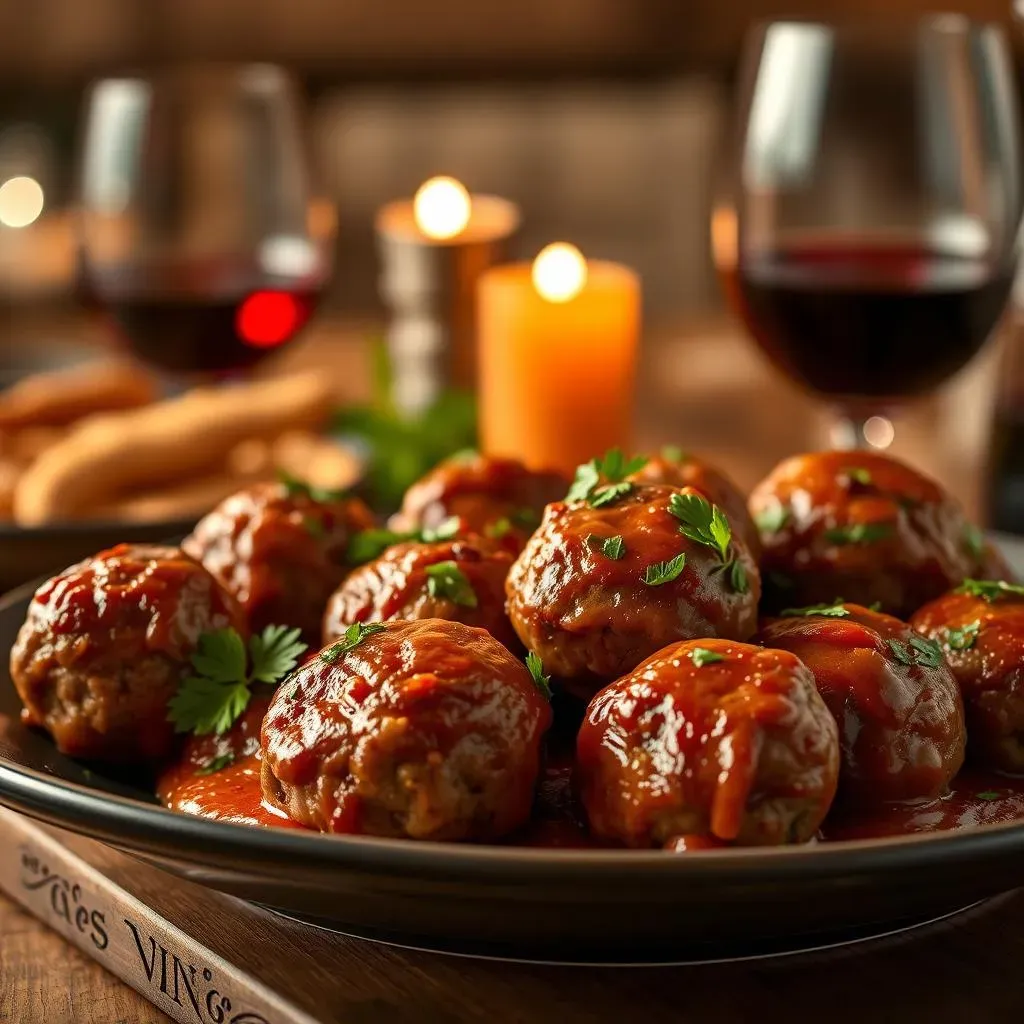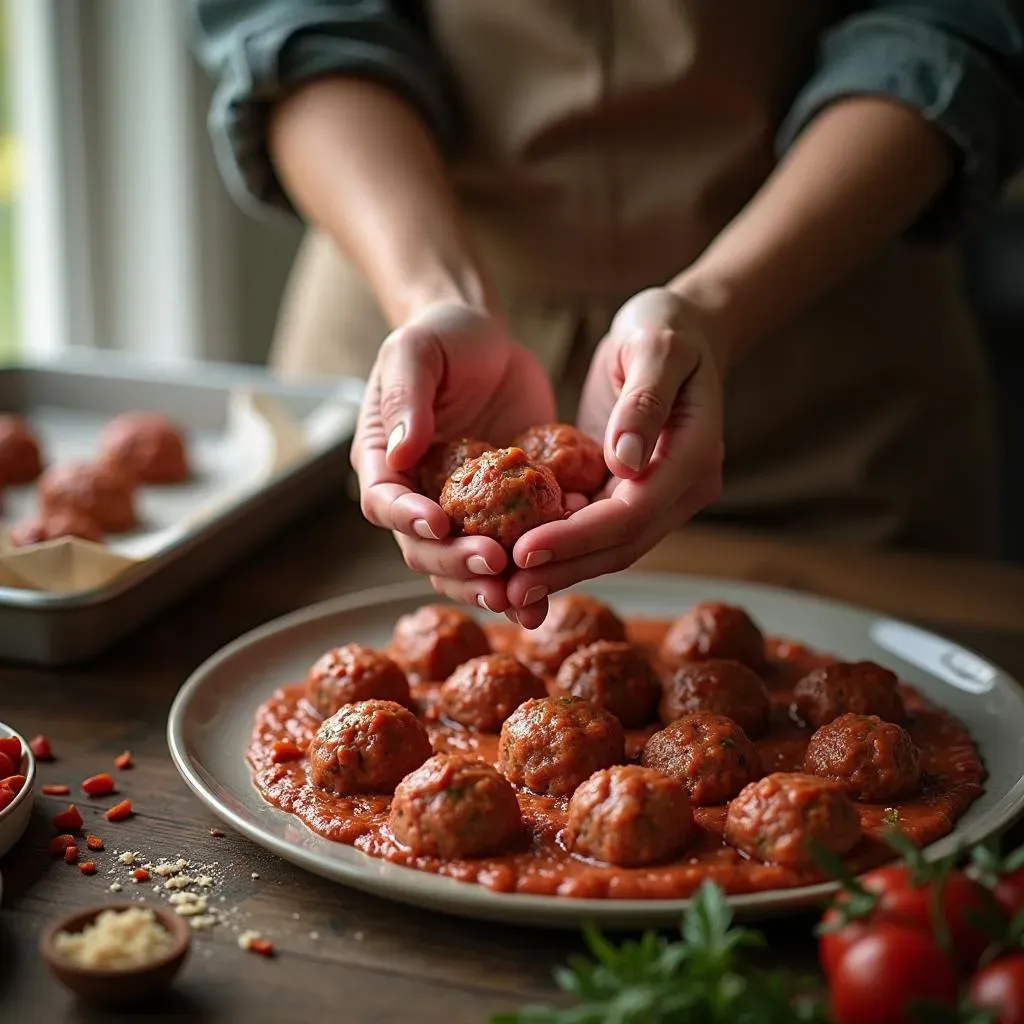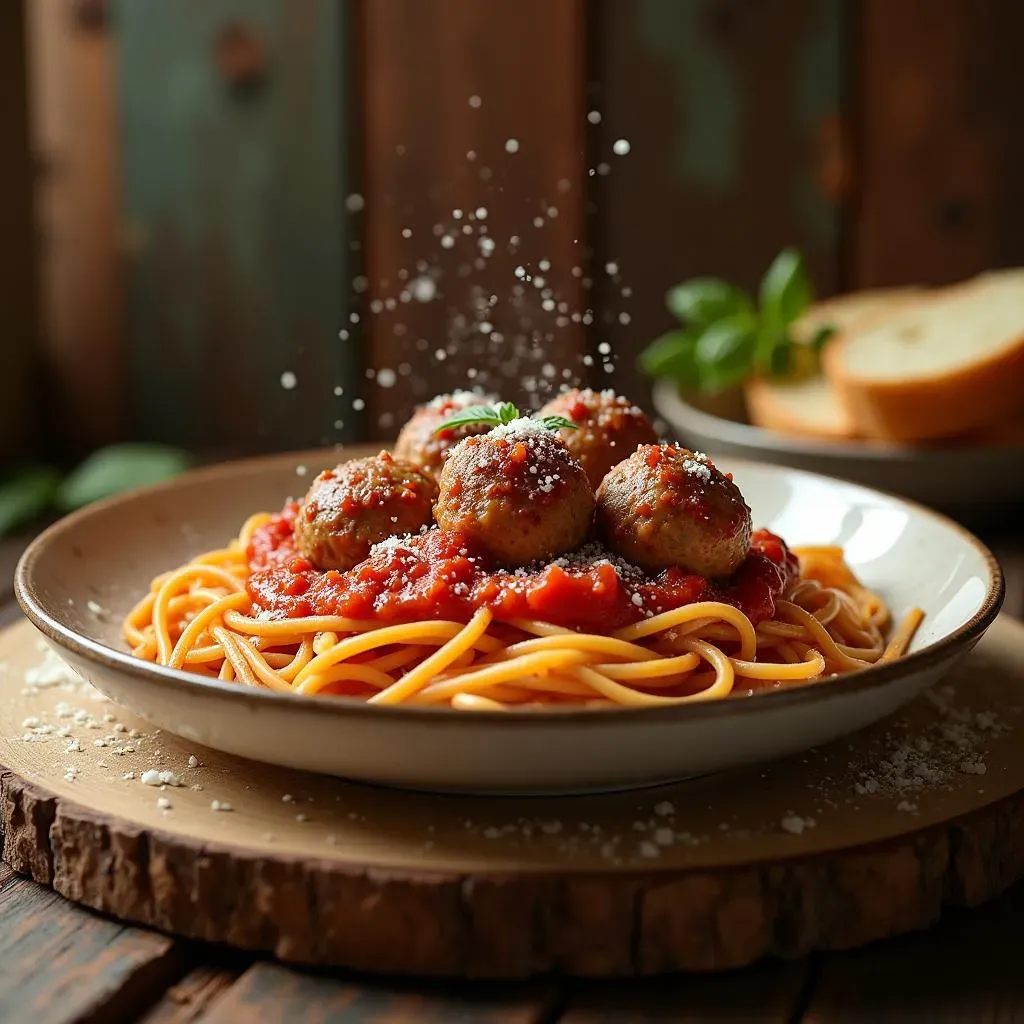Table of Contents
Are you ready to embark on a culinary adventure? This article will guide you to create the best pork and beef meatball recipe you've ever tasted! Forget bland, dry meatballs; we're diving into a world of juicy, flavorful perfection. We'll explore the ideal blend of pork and beef, ensuring a harmonious balance of texture and taste. Then, we'll master the art of meatball making, from expertly mixing the ingredients to achieving that perfect, golden-brown finish. But the journey doesn't end there! We’ll also uncover creative serving suggestions, transforming your meatballs from a simple dish into a culinary masterpiece. Get ready to impress your friends and family with meatballs so delicious, they'll be begging for more. This isn't just a recipe; it's a culinary transformation. Let's get started on your quest for the best pork and beef meatball recipe!
The Perfect Meatball Blend: Pork and Beef Harmony

The Perfect Meatball Blend: Pork and Beef Harmony
The Magic Ratio: Finding the Sweet Spot
So, you're diving into the world of pork and beef meatballs? Fantastic! The key to truly amazing meatballs lies in finding the perfect balance between these two delicious meats. Think of it like a dance – you need both partners to create something truly special. Too much pork, and you might end up with meatballs that are a bit too rich and dense. Too much beef, and they could be a little dry and lacking that subtle sweetness pork provides. A good starting point is a 50/50 blend, but don't be afraid to experiment!
For a leaner meatball, consider using a higher percentage of lean ground beef, perhaps a 60/40 beef-to-pork ratio. This will reduce the fat content without sacrificing flavor. On the other hand, if you prefer a richer, more decadent meatball, a 40/60 blend might be your ideal starting point. Remember, the best meatball is the one that *you* enjoy most!
Beyond the Basics: Exploring Different Cuts
Now, let's talk about the type of ground beef and pork you use. Not all ground meat is created equal! For the beef, a blend of chuck and sirloin is a great choice. It offers a nice balance of flavor and moisture. For the pork, ground shoulder or a combination of shoulder and loin is usually a winner. These cuts provide a good amount of fat, which contributes to juiciness. But here's the fun part: don't be afraid to experiment with different cuts. A little bit of Italian sausage mixed in can add a delightful depth of flavor to your meatballs. Check out this beef and sausage meatball recipe for inspiration!
Think about what kind of flavor profile you're aiming for. Are you going for a classic Italian meatball? A spicier kick? Or something completely unique? The meat you choose will significantly influence the overall taste, so choose wisely! This is where your culinary creativity shines!
Meat Type | Fat Content | Flavor Profile |
|---|---|---|
Lean Ground Beef | Low | Mild, slightly savory |
Ground Chuck | Medium | Rich, flavorful |
Ground Pork Shoulder | High | Sweet, slightly fatty |
The Importance of Freshness: Quality Ingredients, Quality Meatballs
Finally, let's talk about the importance of using fresh, high-quality ingredients. This is where many home cooks stumble. Using fresh ground meat makes a world of difference. The flavor is more vibrant, and the texture is much better. The same goes for the other ingredients you'll be adding to your meatball mixture – fresh herbs, good quality bread crumbs, and flavorful cheeses. These seemingly small details significantly impact the final product. It's the difference between a good meatball and a truly exceptional one!
Don't skimp on the quality of your ingredients. Freshness matters! If you’re looking for a simple recipe to start with, try this simple beef meatball recipe as a base and build from there. Remember, using high-quality ingredients is an investment in flavor.
- Use fresh, high-quality ground beef and pork.
- Choose fresh herbs and spices.
- Opt for good quality bread crumbs or panko.
- Don't be afraid to experiment with different cheeses.
Mastering the Meatball Technique: From Mix to Mouthwatering

Mastering the Meatball Technique: From Mix to Mouthwatering
The Art of the Mix: Gentle Hands, Big Flavor
Alright, let's get our hands dirty! Mixing the meatball ingredients is more of a delicate dance than a wrestling match. You want to combine everything gently, avoiding overmixing. Overmixing develops the gluten in the breadcrumbs, resulting in tough meatballs. Think of it like making a delicate cake batter—you wouldn't want to overmix that, would you? Instead, use your hands to gently incorporate all the ingredients until just combined. It’s a sensory experience; you'll feel when it's just right.
Adding a little ice water can help keep the mixture moist and prevent the meatballs from becoming dry. Just a tablespoon or two usually does the trick. Don't be afraid to taste the mixture before forming the meatballs. Adjust the seasonings as needed to achieve your desired flavor profile. If you're looking for a simple, no-fuss approach, check out this easy meatball recipe—it's a great starting point for beginners.
- Gently combine ingredients.
- Avoid overmixing.
- Add ice water for moisture.
- Taste and adjust seasonings.
Shaping Up: Uniformity for Even Cooking
Now comes the fun part—shaping the meatballs! Consistency is key here. Aim for uniform-sized meatballs to ensure even cooking. This will prevent some meatballs from being overcooked while others remain undercooked. Using a small cookie scoop or a tablespoon to portion out the meat mixture can help achieve this consistency. Rolling the meatballs in your hands is a great way to ensure they're smooth and round.
Don't worry if your meatballs aren't perfectly round; a little rustic charm is perfectly acceptable! The most important thing is that they are evenly sized. Once you've shaped your meatballs, you're ready to cook them. For a delicious and convenient cooking method, consider baking your meatballs instead of frying them. You can find a great recipe for baked meatballs here: meatball recipe using ground beef.
Meatball Size | Cooking Time (approx.) |
|---|---|
1-inch | 20-25 minutes |
1.5-inch | 25-30 minutes |
2-inch | 30-35 minutes |
Cooking to Perfection: Golden Brown and Juicy
The final step in mastering the meatball technique is cooking them to perfection. Baking is a fantastic way to cook meatballs evenly, resulting in a juicy interior and a beautifully browned exterior. Preheat your oven to 375°F (190°C), arrange the meatballs on a baking sheet, and bake for about 20-30 minutes, or until they're cooked through. A meat thermometer is your best friend here—ensure the internal temperature reaches 165°F (74°C). You can also pan-fry or even slow-cook your meatballs; experiment to find your favorite method!
Remember, the cooking time will vary depending on the size of your meatballs. Smaller meatballs will cook faster than larger ones. Once they are cooked, let them rest for a few minutes before serving. This allows the juices to redistribute, resulting in even more tender and flavorful meatballs. For some creative casserole ideas, check out this ultimate beef meatball casserole recipe.
Beyond the Ball: Serving Suggestions and Creative Twists

Beyond the Ball: Serving Suggestions and Creative Twists
Classic Comfort: Pasta Perfection
Let's start with the classic: spaghetti and meatballs! This timeless combination is a crowd-pleaser for a reason. The rich, savory meatballs pair perfectly with the smooth, slightly tangy tomato sauce, creating a symphony of flavors. Serve it with a sprinkle of Parmesan cheese and a side salad for a complete and satisfying meal. For a twist on this classic, try using different pasta shapes like penne or rigatoni. Or, if you're feeling adventurous, try making your own pasta from scratch!
Don't limit yourself to just spaghetti! Consider serving your meatballs over other types of pasta, such as fettuccine, linguine, or even gnocchi. Experiment with different sauces, too. A creamy Alfredo sauce or a spicy arrabiata sauce can elevate your meatball experience to a whole new level. For a quick and easy weeknight meal, try this beef meatball pasta recipe.
- Spaghetti
- Fettuccine
- Linguine
- Penne
- Rigatoni
- Gnocchi
Beyond the Bowl: Meatball Adventures
Think outside the pasta box! Your delicious meatballs can be the star of many other dishes. Try them in a hearty meatball sub, nestled between crusty bread with melted mozzarella and marinara sauce. Or, how about a comforting meatball soup, warming you from the inside out on a chilly evening? The possibilities are endless!
Meatballs also make a fantastic addition to casseroles, like this ultimate beef meatball casserole recipe. They can even be used as a topping for baked potatoes or mashed sweet potatoes, adding a savory twist to a classic side dish. Don't be afraid to get creative and experiment with different flavors and combinations!
Dish | Serving Suggestion |
|---|---|
Meatball Sub | Crusty bread, melted mozzarella, marinara sauce |
Meatball Soup | Hearty broth, vegetables, herbs |
Meatball Casserole | Pasta, cheese, vegetables |
Baked Potato Topping | Sour cream, chives |
Global Inspiration: A World of Meatball Flavors
Let's take a culinary journey around the world! Meatballs aren't just an Italian staple; many cultures have their own unique versions. Explore Swedish meatballs, known for their creamy gravy, or try your hand at Greek keftedakia, seasoned with herbs and spices. The possibilities are endless!
Consider adding different spices and herbs to your meatball mixture to create unique flavor profiles. Experiment with Asian-inspired flavors like ginger, garlic, and soy sauce, or try a North African twist with harissa paste and cumin. This Italian-style beef meatball recipe is a great starting point for experimenting with global flavors.